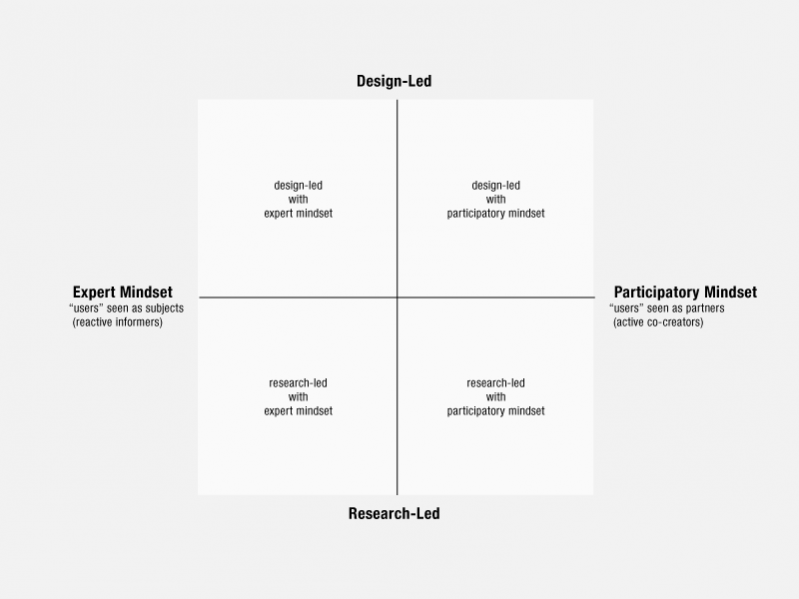We talk about “users” now all the time – putting the user first, including the user early in design, developing products for the user.
But this wasn’t always the case.
In fact, this approach of user consultation and iteration is really based on the concept of research led design.
This article looks at what research-led design is and how we can better understand it in the context of modern web design.
Research led design
If you’ve ever watched Mad Men or read Jerry Della Femina’s
From Those Wonderful Folks Who Gave You Pearl Harbor: Front-Line Dispatches from the Advertising War, it becomes very clear from an ad perspective at least that users were not high on the consultation list for creative types.
Contrast that to pure research organizations, like anything Neil Patel runs, and it becomes abundantly clear that there has been a dramatic shift is how designers and creatives approach their jobs.
This shift is called research led design.To understand what on earth we’re talking about, it helps to map out these abstract concepts.

As you can see, and as Liz Sanders from Dubberly Design Office so eloquently mapped out back in 2008, research led design sits opposite to design-led design, against the axis of experts to users.
It’s a process of design that heavily relies on hard data and research, either qualitative or quantitative, to inform design decisions, rather than relying solely on the expertise and experience of the designer.
For example, let’s say a company is designing a website. Expert-led design might conduct a heuristic review of the existing site and a competitive analysis of some of the other sites out there, then design the website.
However, a research-led website design project would likely start with some usability testing of the existing site. Then some eye tracking, or a review of existing metrics and user flows. This would inform the design decisions going forward, with iterative testing along the way.
Let’s say that these two approaches are designing a landing page for the new site.
The expert might say ‘I think the CTA should be red, because that’s what I’ve used in the past and I achieved good conversions with that landing page.’
Research-led design would say: ‘ok, let’s do some A/B testing and compare green and red buttons. OK great, red did better. Let’s make it red, but continue to tweak over time with more A/B and multi-variant testing.’
See the difference?
The strengths of research led design
Research led design has taken off in a big way, and there are a couple reasons why:
- It builds accountability and measurability into the creative process
- Users are more discerning than ever before
Let’s look at these in more detail.
Accountability and measurability
When companies rely on expert-led design, it’s hard for them to know who’s responsible for what and to measure it successfully.
For example, let’s take our landing page case from before.
Let’s say that the new landing page converts 10% better than the old one. That’s great! But the only accountability is the expert who built the page.
Compare that to research led design, where organization leaders can say ‘our conversions increased by 7% when we changed the copy, and another 3% when we changed the colour of the button.’
It’s easy to see when research is a popular option.
Users are more discerning than ever before
The market has changed enormously over the past 15 years. Today, consumers have access to more information, are less willing to take a chance, and more prone to product research themselves before they buy.
Basically, users didn’t get smarter, but they got an awful lot more informed.
Thus, even a small edge in what’s become an incredibly competitive world is going to be valued, and as a result companies are a lot more enthusiastic to do something that has a sound base in research and analysis rather than take a chance on an expert.
The case for the expert
There are, however, a few companies which cling to the old way of doing things, not out of nostalgia but because expert led design works for them.
Fast Company wrote an article detailing how both Apple and IKEA, two titans of design, design products that they believe users will love, rather than products that research tells them users will love.
And these companies, particularly Apple, highlight a major challenge with user research – users can’t predict future demand.
Henry Ford is often quoted (potentially inaccurately) as saying “if I’d asked my customers what they wanted, they’d have said a faster horse.”
Regardless of who said it, the sentiment stands – users are not at all a good predictor of future demand.
So while Apple and IKEA both design with the users in mind, they don’t kill themselves testing every little thing. They’re far more focused on designing products that work for users tomorrow, not products that conform to user demands today.
Recap
- Research-led design is the process of using qualitative and quantitative research to inform design decisions and has taken off in the last 15 years in a big way.
- Smaller margins, more discerning users, and greater pressure to justify design decisions with hard facts have all contributed to its rise
- Expert design is alive and kicking. Designing products for future demand will always hinge on experts building things that they believe users will love, rather than facts and figures.
